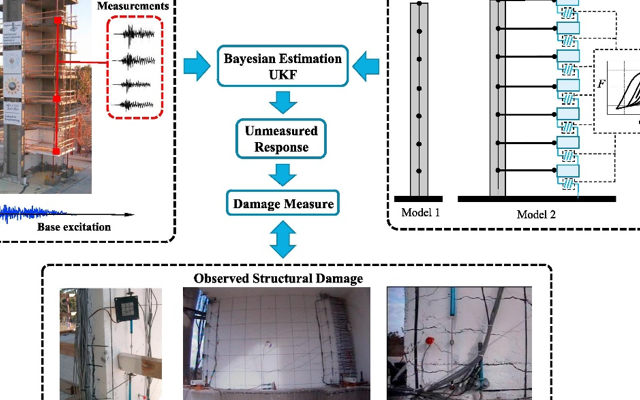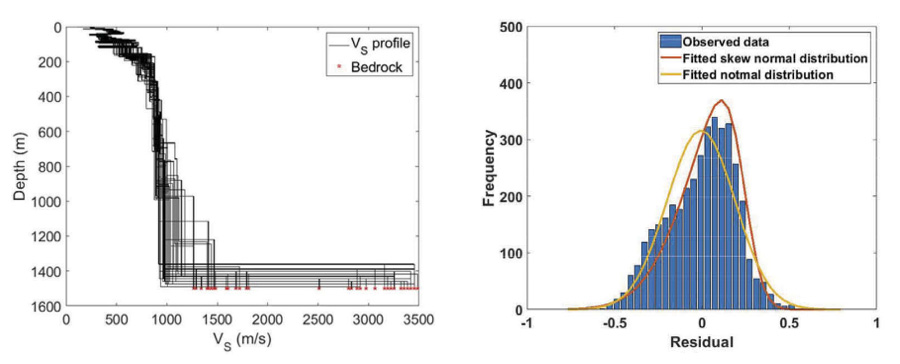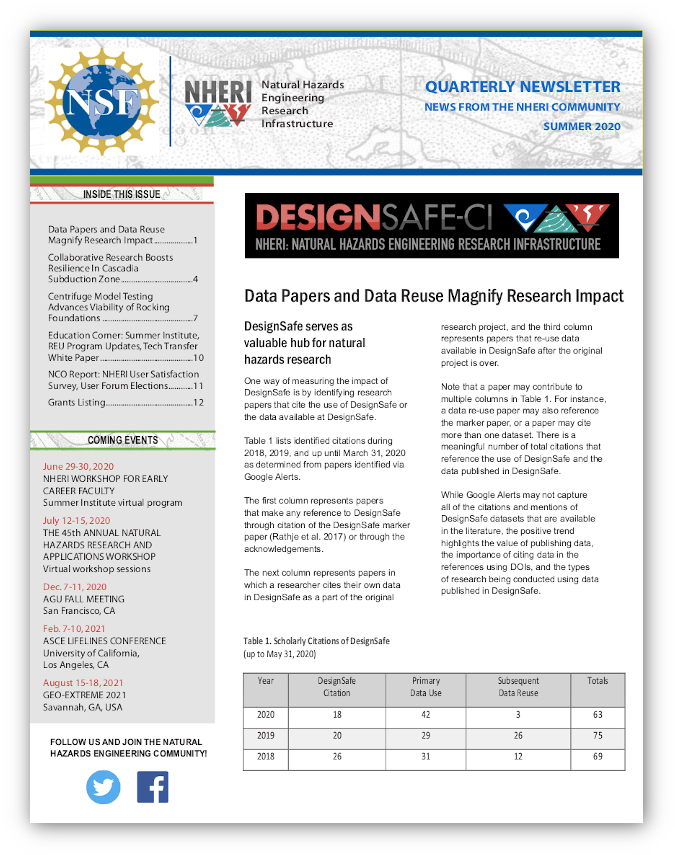Data Papers and Data Reuse Magnify Research Impact
Published on June 15, 2020
One way of measuring the impact of DesignSafe is by identifying research papers that cite the use of DesignSafe or the data available at DesignSafe.
One way of measuring the impact of DesignSafe is by identifying research papers that cite the use of DesignSafe or the data available at DesignSafe.
Table 1 lists identified citations during 2018, 2019, and up until May 31, 2020 as determined from papers identified via Google Alerts.
The first column represents papers that make any reference to DesignSafe through citation of the DesignSafe marker paper (Rathje et al. 2017) or through the acknowledgements.
The next column represents papers in which a researcher cites their own data in DesignSafe as a part of the original research project, and the third column represents papers that re-use data available in DesignSafe after the original project is over.
Note that a paper may contribute to multiple columns in Table 1. For instance, a data re-use paper may also reference the marker paper, or a paper may cite more than one dataset. There is a meaningful number of total citations that reference the use of DesignSafe and the data published in DesignSafe.
While Google Alerts may not capture all of the citations and mentions of DesignSafe datasets that are available in the literature, the positive trend highlights the value of publishing data, the importance of citing data in the references using DOIs, and the types of research being conducted using data published in DesignSafe.
| Year | DesignSafe Citation |
Primary |
Subsequent Data Reuse |
Totals |
|---|---|---|---|---|
| 2020 | 18 | 42 | 3 | 63 |
| 2019 | 20 | 29 | 26 | 75 |
| 2018 | 26 | 31 | 12 | 69 |
Table 1. Scholarly Citations of DesignSafe (up to May 31, 2020)

Research by Enazo et al. (2019) that used experimental data from Panagiotou et al. (2013)
DATA REUSE VIGNETTES
From continuing work on established lines of research to validating numerical models and testing new hypotheses, data reuse can take many forms.
To learn more about the motivations for data reuse we interviewed a handful of DesignSafe data consumers. The following cases exemplify how the variety of data published in DesignSafe supports diverse data reuse scenarios to advance the field of Natural Hazards Engineering.
MODEL VALIDATION
Dr. Kalil Erazo and his colleagues from Rice University and Tufts University have repeatedly used data from the experimental project Shake Table Response of Full Scale Reinforced Concrete Building Slice (Panagiotou et al. 2013, doi.org/10.4231/D35T3G04T) to validate a Bayesian-modeling approach that couples experimental measurements with a numerical model of the system.
This approach has the potential to improve predictions of the seismic response of large structures and the evaluation of quantitative measures of structural damage (Erazo et al. 2019, Erazo and Nagarajaiah 2019).
The unique experimental data comes from a full-scale, seven-story building subjected to earthquake motions of varying intensity. While it took time to gather the subset of acceleration data from this very complex dataset, the team found all the data and the metadata that they needed to complete their research in the published dataset available in the DesignSafe Data Depot.
FIELD CHARACTERIZATION DATA
Field characterization datasets such as the subsurface geotechnical dataset from the DesignSafe project Dynamic Characterization of Wellington, New Zealand project (Cox and Vantassel 2018, doi.org/10.17603/DS24M6J) can be exploited for a variety of purposes.
Although the data collected by Cox and Vantassel (2018) was collected to understand earthquake shaking in Wellington, New Zealand from the 2016 Kaikoura earthquake, Dr. Rodriguez-Marek and his colleagues at Virginia Tech used the data to represent the statistical uncertainty of the shear wave velocity (Vs) at a site for use in ground response analysis.
In Bahrampouri et al. (2019), they calculated the statistical distribution of site amplification functions (AF) given the statistical distribution in Vs and demonstrated that the resulting AF distribution is skewed.
This finding has the potential to improve probabilistic seismic hazards analyses (PSHA) that include site response. Rodriguez-Marek and his colleagues were able to easily use the published data because it included not only the raw geophysical data, but also the processed results representing the range of Vs profiles.

Research by Bahrampouri et al. (2019) that utilized the processed data published by Cox and Vantassel (2018)

Research by Sadiq et al. (2019) that used the experimental data published by Gillis et al. (2014) to validate a numerical approach for analyzing tunnels
VALIDATION OF NUMERICAL APPROACH
Availability of open, curated datasets are fundamental to those researchers who do not have the resources to conduct large-scale experiments.
Such is the case for Dr. Duhee Park and his students at Hanyang University in South Korea. Their research group studies various effects of earthquakes on tunnels, and they were looking for experimental data regarding the seismic response of a tunnel system.
In their published research (Sadiq et al. 2019) they used Gillis et al. (2014, doi.org/10.4231/D3JQ0SW10) published data from a geotechnical centrifuge test that investigated the seismic response of a shallow cut and cover tunnel in sand to validate a widely used Equivalent linear (EQL) analysis approach for seismic analysis of tunnels. They found the experience of retrieving the recorded responses and corresponding ground motions easy and fast due to the clear organization of the dataset.
SUMMARY
We learned from these researchers that it is useful for relevant data and metadata to be available online in one reliable location.
Although these researchers often learned about the datasets from journal papers or conferences, it was important that they could easily access the datasets electronically without contacting the original authors. Their testimony highlights the lasting value of the datasets that continue to be used decades after they are published.
DesignSafe is eager to continue helping and encouraging data publishing and reuse activities. Citing the data in the reference section of papers using the data DOI/citation language provided by DesignSafe is a fundamental piece of promoting data impact and reuse.
References
Bahrampouri, M., Rodriguez-Marek, A. and Shing Thum, T. (2019) On the Distribution of Site Amplification Factors. in Earthquake Geotechnical Engineering for Protection and Development of Environment and Constructions, Silvestri & Moraci (Eds) Associazione Geotecnica Italiana, p. 1260-1264. Rome, Italy, doi:10.1201/9780429031274.
Cox, B. and Vantassel, J. (2018) Dynamic Characterization of Wellington, New Zealand, DesignSafe-CI [publisher], Dataset, doi:10.17603/DS24M6J.
Erazo, K., Moaveni, B., and Nagarajaiah, S. (2019) Bayesian Seismic Strong-Motion Response and Damage Estimation with Application to a Full-Scale Seven Story Shear Wall Structure. Engineering Structures, 186, 146-160, doi:10.1016/j.engstruct.2019.02.017.
Erazo, K. and Nagarajaiah, S. (2019) On-Line Response and Damage Estimation of a Shear Wall Structure Tested on a Shake Table Using Bayesian Filtering. Proc. SPIE 10970, Sensors and Smart Structures Technologies for Civil, Mechanical, and Aerospace Systems 2019, 1097032. doi:10.1117/12.2527936.
Gillis, K., Dashti, S., and Jones, C. (2014) Test-1: Seismic Response of an Isolated Cut and Cover Tunnel in Dry Sand, [Dataset]. Network for Earthquake Engineering Simulation (NEES). doi:10.4231/D3JQ0SW10.
Panagiotou, M., Restrepo, J., and Conte, J. (2013). Shake Table Test of 7-story RC Bearing Wall Building [Dataset]. Network for Earthquake Engineering Simulation (NEES). doi:10.4231/D35T3G04T.
Rathje, E., Dawson, C. Padgett, J.E., Pinelli, J.-P., Stanzione, D., Adair, A., Arduino, P., Brandenberg, S.J., Cockerill, T., Dey, C., Esteva, M., Haan, Jr., F.L., Hanlon, M., Kareem, A., Lowes, L., Mock, S., and Mosqueda, G. 2017. DesignSafe: A New Cyberinfrastructure for Natural Hazards Engineering, ASCE Natural Hazards Review, doi:10.1061/(ASCE)NH.1527-6996.0000246
Sadiq, S., Nguyen, Q., Jung, H., and Park, D. (2019). Effect of Flexibility Ratio on Seismic Response of Cut-and-Cover Box Tunnel. Advances in Civil Engineering, vol. 2019, July 2019, pp. 116. DOI.org (Crossref), doi:10.1155/2019/4905329.
NHERI Quarterly
Summer 2020
Data Papers and Data Reuse Magnify Research Impact
Collaborative Research Boosts Resilience in Cascadia Subduction Zone
Centrifuge Model Testing Advances Viability of Rocking Foundations
Education Corner: Summer Institute, REU Program Updates
New Technical Transfer White Paper Available Online
NCO Report: NHERI User Satisfaction Survey, User Forum Elections
NHERI Grants Listing for Q4 2019 and Q1 2020






